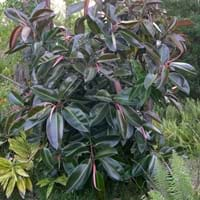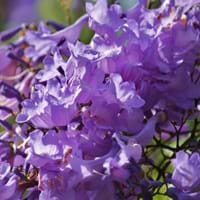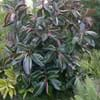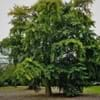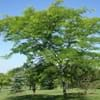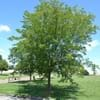Life Span
Perennial
Perennial
Origin
Southern Asia, Southeastern Asia, India, Nepal
Caribbean
Types
not available
Jacaranda mimosifolia, Jacaranda brasiliana
Number of Varieties
Not Available
Habitat
agricultural areas, Along Railroads, Coastal Regions, Forests, Roadsides, Scrubs, Suburban areas
along watercourse, Cold Regions, Grassland, River side
USDA Hardiness Zone
10-11
10-12
Sunset Zone
H1, H2, 16, 17, 19, 20, 21, 22, 23, 24
H1, H2, 22, 23, 24
Habit
Upright/Erect
Oval or Rounded
Flower Color
Not Available
White, Lavender, Blue Violet
Flower Color Modifier
Bicolor
Bicolor
Fruit Color
Yellow, Yellow green
Brown
Leaf Color in Spring
Red, Dark Green, Crimson
Green, Dark Green
Leaf Color in Summer
Red, Dark Green, Crimson
Green, Dark Green
Leaf Color in Fall
Red, Dark Green, Crimson
Green, Dark Green
Leaf Color in Winter
Red, Dark Green, Crimson
Not Available
Leaf Shape
Elliptic to oblong
feather-shaped
Plant Season
Spring, Summer, Fall, Winter
Spring
Sunlight
Full Sun, Partial Sun, Partial shade
Full Sun
Type of Soil
Loam, Sand
Loam, Sand
The pH of Soil
Acidic, Neutral, Alkaline
Neutral, Alkaline
Soil Drainage
Well drained
Well drained
Bloom Time
Not Available
Early Spring, Spring, Late Spring
Tolerances
Not Available
Drought, Frost
Where to Plant?
Ground
Ground
How to Plant?
Seedlings, Vegetative Reproduction
Seedlings, Transplanting
Plant Maintenance
Medium
Low
Watering Requirements
Keep ground moist, Requires a lot of watering
Use Mulches to help prevent water loss during hot and windy weather, Water daily during growing season, Water more in summer
In Summer
Lots of watering
Lots of watering
In Spring
Moderate
Moderate
In Winter
Average Water
Average Water
Soil pH
Acidic, Neutral, Alkaline
Neutral, Alkaline
Soil Type
Loam, Sand
Loam, Sand
Soil Drainage Capacity
Well drained
Well drained
Sun Exposure
Full Sun, Partial Sun, Partial shade
Full Sun
Pruning
Prune for shortening long shoots
Remove damaged leaves, Remove dead branches
Fertilizers
don't fertilize in winter
All-Purpose Liquid Fertilizer, Compost, fertilize in growing season, Fertilize the soil before planting
Pests and Diseases
Mealybugs, Red blotch, Scale, Spider mites, Yellow Leaves
Aphids, Phytophthora, Red blotch, Root rot
Plant Tolerance
Not Available
Drought
Flowers
Insignificant
Showy
Flower Petal Number
Not Available
Single
Foliage Texture
Bold
Fine
Foliage Sheen
Glossy
Matte
Attracts
Not Available
Bees, Birds, Butterflies, Hummingbirds
Allergy
Asthma, breathing problems
allergic conjunctivitis, Dizziness, sneezing
Aesthetic Uses
Showy Purposes
Beautification, Showy Purposes
Beauty Benefits
Not Available
Acne, For treating wrinkles, Improve skin condition, Not Available, Skin inflammation
Environmental Uses
Air purification, soil erosion prevension on hill slopes
Nesting sites for birds, Shadow Tree
Medicinal Uses
Not Available
Acne, anti-allergy, Antibacterial, Antiseptic, Treating fever, Varicose veins
Part of Plant Used
Latex
Bark, Fruits, Leaves
Other Uses
Making rubber, Making tyres
Beneficial species for attracting pollinators, Used as firewood, Used as Ornamental plant
Used As Indoor Plant
Yes
No
Used As Outdoor Plant
Yes
Yes
Garden Design
Container, Feature Plant, Houseplant, Shade Trees, Tropical
Feature Plant, Foundation, Mixed Border, Shade Trees, Tropical
Botanical Name
FICUS elastica
JACARANDA caerulea
Common Name
Rubber Plant
Cancer Tree, Caribbean Jacaranda, Green Ebony
In Hindi
रबड़ का पौधा
Neeli Gulmohur
In German
Ficus elastica
Palisanderholzbaum
In French
Ficus elastica
Flamboyant bleu
In Spanish
ficus
Jacaranda mimosifolia
In Greek
ελαστικός φίκος
Jacaranda mimosifolia
In Portuguese
fábrica de borracha
Jacarandá-mimoso
In Polish
gumy roślin
Jakaranda mimozolistna
In Latin
Flexilis herba
Jacaranda mimosifolia
Phylum
Tracheophyta
Magnoliophyta
Class
Magnoliopsida
Magnoliopsida
Order
Rosales
Scrophulariales
Family
Moraceae
Bignoniaceae
Clade
Angiosperms, Eudicots, Rosids
Asterids
Tribe
Ficeae
Not Available
Subfamily
Not Available
Not Available
Number of Species
Not Available
Importance of Ficus Elastica and Jacaranda
Want to have the most appropriate plant for your garden? You might want to know the importance of Ficus Elastica and Jacaranda. Basically, these two plants vary in many aspects. Compare Ficus Elastica and Jacaranda as they differ in many characteristics such as their life, care, benefits, facts, etc. Every gardener must at least have the slightest clue about the plants he wants to plant in his garden. Compare their benefits, which differ in many ways like facts and uses. The medicinal use of Ficus Elastica is Not Available whereas of Jacaranda is Acne, anti-allergy, Antibacterial, Antiseptic, Treating fever and Varicose veins. Ficus Elastica has beauty benefits as follows: Not Available while Jacaranda has beauty benefits as follows: Not Available.
Compare Facts of Ficus Elastica vs Jacaranda
How to choose the best garden plant for your garden depending upon its facts? Here garden plant comparison will help you to solve this query. Compare the facts of Ficus Elastica vs Jacaranda and know which one to choose. As garden plants have benefits and other uses, allergy is also a major drawback of plants for some people. Allergic reactions of Ficus Elastica are Asthma and breathing problems whereas of Jacaranda have allergic conjunctivitis, Dizziness and sneezing respectively. Having a fruit bearing plant in your garden can be a plus point of your garden. Ficus Elastica has no showy fruits and Jacaranda has showy fruits. Also Ficus Elastica is not flowering and Jacaranda is not flowering . You can compare Ficus Elastica and Jacaranda facts and facts of other plants too.
